2022 Car Tax Changes
If you’re thinking of leasing a new car this year, or if you already have a vehicle and are looking to manage your annual budget, it's important to consider how car road tax will impact your overall running costs.
In the UK, all motorists are affected by car road tax, officially known as Vehicle Excise Duty (VED). The UK government reviews the annual tax, which is based on several factors, with Chancellor Rishi Sunak recently announcing changes for the 2022/23 tax year.
In this guide, Nationwide Vehicle Contracts explains how the car road tax system works, the implications of the March 2022 budget for motorists, and how much you can expect to pay for car road tax in 2022-23.
For those looking to cut down on annual car running costs, we also run through the top five road tax-free cars available to lease in 2022.
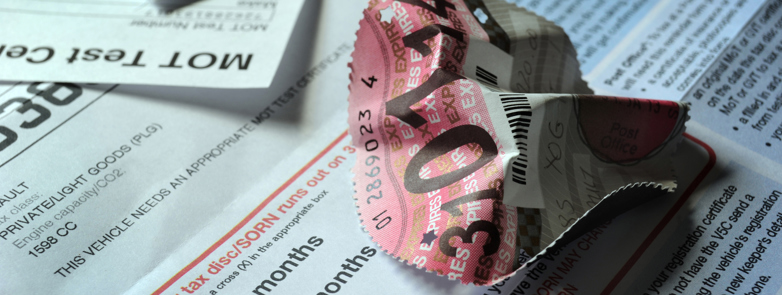
What is car road tax?
Officially called Vehicle Excise Duty (VED), but more commonly known as car tax, road tax or road fund licence, VED is an annual tax paid by anyone with a motor vehicle used or parked on public roads. It is enforced by the DVLA, and drivers who fail to pay could receive a fine of up to £1,000.
How is car road tax calculated?
Currently, the Vehicle Excise Duty (VED) system is split into two parts:
- First-year rate - A one-off rate charged in the car’s first year. This is typically included in the car’s on-the-road (OTR) price.
- Standard rate - A flat annual rate charged from the second year onwards.
The road tax rate you will be charged in the first year and subsequent standard rate years depends on several factors.
Factors that impact road tax rates include:

Year of registration
The rate of road tax you will pay varies depending on when the car was registered.
Currently, the UK Government has three tiers:
- Cars registered on or after 1 April 2017
- Cars registered between 1 March 2001 and 31 March 2017
- Cars registered before 1 March 2001

Engine size
Cars registered before 1 March 2001 are charged based on engine size. Cars with an engine over 1549cc are charged at a higher annual rate than those with a smaller engine.

Fuel type
For cars registered between 1 March 2001 and 31 March 2017, the vehicle tax rate is based on fuel type and CO2 emissions. The fuel type of the vehicle also affects new cars as alternatively fuelled vehicles, including hybrids, bioethanol and liquid petroleum gas, get a reduction to the Standard rate.

CO2 emissions
You’ll pay a rate based on a vehicle’s CO2 emissions the first time it’s registered. Cars with zero emissions pay nothing in their first year and a flat rate following that. High emission vehicles will pay a much higher rate.

The value of the vehicle
For cars purchased after 1 April 2017 that cost more than £40,000, there is also an additional premium rate tax on top of the standard rate.
Understanding the effect of the 2022-2023 budget on road tax
As we mentioned earlier, UK car road tax rates are reviewed annually by the UK Government to ensure they meet the growing needs of motorists, and that is in line with inflation. This means the rate you pay one year may differ from the rate you pay the following year.
In October 2021, UK Chancellor Rishi Sunak announced in his Autumn Budget several changes to the road tax (VED) system, which come into place from 1 April 2022, including:
- First-year tax rates will increase by £5 to £120 for most vehicles
- Standard road tax rates will increase by £10 per year for most vehicles
- Premium tax rates for new cars over £40,000 will increase by £30 per year
Let’s take a look into the changes in further detail.
Increase in first-year road tax rates
When motorists buy a new car, they must pay a first-year road tax rate based on the CO2 emissions of the vehicle. This is typically included in the car’s on-the-road (OTR) price. For those looking to buy or lease a new car in 2022, the first-year tax rate increases from 1 April.
Zero or low emission vehicles (up to 75g/km of CO2) won’t see any change, but most motorists will see an increase of between £5 to £30. Cars at the higher end of the emissions table (over 255g/km group) will see the biggest increase of up to £120. This means that the most-polluting petrol and diesel cars, like the Audi R8, will pay £2,365 road tax in the first 12 months.
It is also worth noting that a supplementary charge will apply for new diesel cars registered from 1 April 2018 that fail to meet the Real Driving Emissions 2 (RDE2) standards, and the car will move up by one VED band.
Increase in standard road tax rates
The standard rate of road tax paid from the second year onwards has also increased slightly. For cars registered after 2017, the rate has increased by 6%, in line with the Retail Prices Index (RPI). This means road tax (VED) for petrol and diesel vehicles will increase by £10 for most vehicles, rising from £155 per year to £165. The only exceptions are zero-emissions vehicles such as electric cars, which qualify for a £0 tax rate.
Premium car tax increases
As well as increasing the standard rate, there has also been a hike to an additional premium rate tax for luxury cars purchased after 1 April 2017 that cost more than £40,000 when new. This ‘expensive car tax’ was introduced in 2017, hitting the pockets of motorists purchasing premium and sportier models.
From 1 April 2022, the additional premium tax rate will increase by £30, jumping from £335 to £355. This is paid for the first five years on top of the standard rate. This means petrol or diesel cars will pay a whopping £520 in standard rate tax this year, irrelevant of their CO2 emissions. Alternatively fuelled vehicles, such as hybrids and liquid petroleum gas, will pay £155 per annum. Zero-emission cars are exempt from this charge.
“The cheapest way is to pay for car tax is to pay for the whole year upfront. If you want to pay by monthly Direct Debit, or for a six-month period, be prepared to pay an extra 5% over the year.”

What will be the road tax expected on my car?
As we mentioned earlier, the Vehicle Excise Duty (VED) system is split into two parts:
- First-year rate - A one-off rate charged in the car’s first year.
- Standard rate - A flat annual rate charged from the second year onwards.
Thankfully, knowing how much your car tax will be is relatively simple to work out. To calculate the annual road tax for your vehicle, you will need:
- Registration date of the car (you can find this on the V5C document or via the DVLA website).
- CO2 emissions of your car (you can find this on the Vehicle Certification Agency website)
- Vehicle list price (the published price before any discounts)
First-year road tax (VED) rates for cars registered from 1 April 2017
The below rates are for the 2022-2023 tax year.
CO2 emissions | First Year rate* | Annual increase (from previous tax year) |
|---|---|---|
0 g/km | £0 | £0 |
1 to 50 g/km | £10 | £0 |
51 to 75 g/km | £25 | £0 |
76 to 90 g/km | £120 | £5 |
91 to 100 g/km | £150 | £10 |
101 too 110 g/km | £170 | £10 |
111 to 130 g/km | £190 | £10 |
131 to 150 g/km | £230 | £10 |
151 to 170 g/km | £585 | £30 |
171 to 190 g/km | £945 | £50 |
191 to 225 g/km | £1420 | £75 |
226 to 255 g/km | £2015 | £105 |
Over 255 g/km | £2365 | £120 |
*New diesel vehicles registered on or after 1 April 2018 that do not meet the real driving emission step 2 (RDE2) standard will be charged a supplement on their First Year Rate to the effect of moving up by one VED band.
Standard rate road tax (VED) rates for cars registered from 1 April 2017
The below rates are for the 2022-2023 tax year.
CO2 emissions | Standard Rate* | Annual increase (from previous tax year) |
|---|---|---|
0 g/km | £0 | £0 |
1 to 50 g/km | £165 | £10 |
51 to 75 g/km | £165 | £10 |
76 to 90 g/km | £165 | £10 |
91 to 100 g/km | £165 | £10 |
101 too 110 g/km | £165 | £10 |
111 to 130 g/km | £165 | £10 |
131 to 150 g/km | £165 | £10 |
151 to 170 g/km | £165 | £10 |
171 to 190 g/km | £165 | £10 |
191 to 225 g/km | £165 | £10 |
226 to 255 g/km | £165 | £10 |
Over 255 g/km | £165 | £10 |
*Alternatively fuelled vehicles, including hybrids, bioethanol and liquid petroleum gas, get a £10 reduction to the Standard rate.
Additional premium (VED) tax rates for cars purchased after 1 April 2017 with a list price of more than £40,000
The below rates are for the 2022-2023 tax year.
Fuel Type | Standard tax rate for cars costing less than £40,000 | Annual increase (from previous tax year) | Standard tax rate for cars costing more than £40,000* | Annual increase (from previous tax year) |
|---|---|---|---|---|
Petrol or diesel | £165 | £10 | £520 | £30 |
Alternative fuel (hybrid) | £155 | £10 | £510 | £30 |
*Cars with a 'list price' (the published price before any discounts) of more than £40,000
When will my car tax payments go up?
The new car tax rates will be effective from 1 April 2022. This means that if you purchase a new car after 1 April, the new first-year car tax rates will apply. The standard rate tax increase will be applied at your next car tax renewal date for those already in their vehicle.
Who is responsible for taxing a leased vehicle?
If you currently lease your vehicle on a contract hire or personal contract hire agreement, the finance provider is responsible for providing the vehicle tax for the duration of the agreement.
It is worth noting that as the cost of road tax is incorporated into your monthly lease rate, if road tax rates go up during the duration of your contract, the finance provider reserves the rate to pass on the additional cost to you.
You can read more about including how you can check that your lease vehicle has been taxed in our handy Taxing a Leased Vehicle guide.
Car tax rates for older cars
Drivers of older cars registered between 1 March 2001 and 31 March 2017 will continue to pay annual road tax as per the rules of the previous tax structures, but with a slight increase of between £5 to £30 due to inflation.
Standard rate road tax (VED) rates for cars registered between 1 March 2001 and 31 March 2017
The below rates are for the 2022-2023 tax year.
Vehicle Excise Duty Band | CO2 emissions | Standard rate | Annual increase (from previous tax year) |
|---|---|---|---|
A | Up to 100 | £0 | £0 |
B | 101 to 110 | £20 | £0 |
C | 111 to 120 | £30 | £0 |
D | 121 to 130 | £135 | £5 |
E | 131 to 140 | £165 | £10 |
F | 141 to 150 | £180 | £10 |
G | 151 to 165 | £220 | £10 |
H | 166 to 175 | £265 | £15 |
I | 176 to 185 | £290 | £15 |
J | 186 to 200 | £330 | £15 |
K* | 201 to 225 | £360 | £20 |
L | 226 to 255 | £615 | £30 |
M | Over 255 | £630 | £30 |
*The Band K rate also applies to cars that were registered before 23 March 2006 and have emissions over 225g/km.
Top cars that are road tax exempt
If you are looking to reduce your annual running costs, choosing a vehicle exempt from road tax will certainly help. Currently, new cars which produce zero grams of carbon dioxide (CO2) emissions are exempt from annual road tax rates, but which car is best for you?
We list our top five electric cars exempt from road tax based on their style, practicality, electric range and boot space.
Top Cars with Zero Road Tax
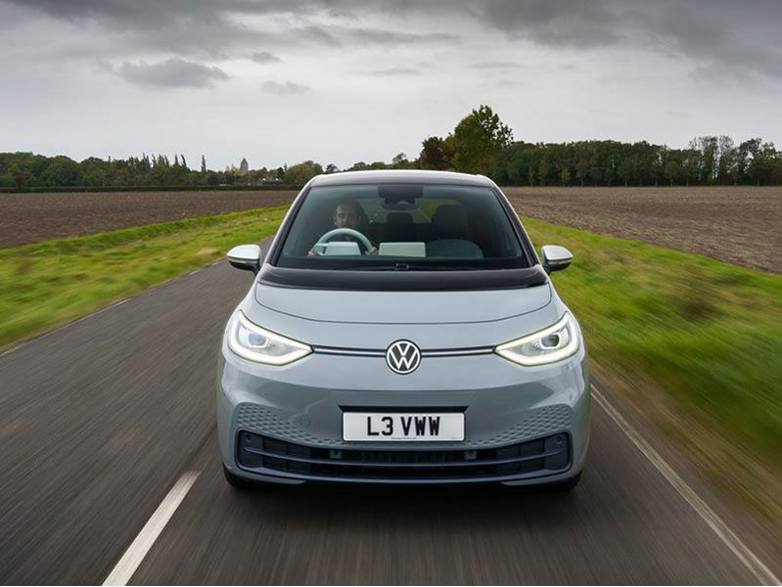
Volkswagen ID.3
Best all-rounder
First on the list is the Volkswagen ID.3, an electric car with an impressive range, no road tax costs and great interior space.
Ideal for busy family life, this battery-powered five-door family hatchback can travel up to 336 miles on a single charge, giving more expensive EVs a run for their money. Its futuristic and funky style makes it stand out on the road, and there are plenty of power options from 145hp to 204hp to suit all needs.
The ID.3 also has an impressive 385 litres of boot space with the rear seats raised, which beats the Golf’s 381 litres and the Ford Focus’ 375 litres, making it the ideal all-rounder for young professionals and growing families alike.
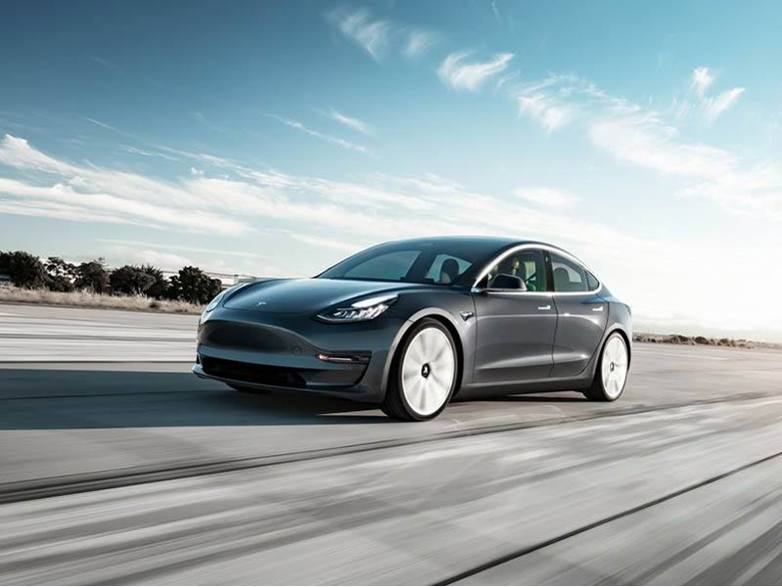
Tesla Model 3
Best for long-distance
The Tesla Model 3 may be the cheapest car in the Tesla range, but it stands out from the range in terms of practicality. In fact, it is one of the best EVs on the market, thanks to its high-tech interior, powerful performance and impressive electric range.
With an electric range of up to 374 miles on a single charge, the Tesla Model 3 is the ideal electric car for those who frequently travel long distances. It's also impressively fast, with the Performance model sprinting from 0-60mph in just 3.1 seconds, which gives most supercars a run for their money.
Inside, the Model 3’s ultra-modern interior is large enough for four adults to travel in comfort. Its combined 425 litres of boot space also means you carry all their luggage, which is just shy of the BMW 3 Series' 480 litres.

MINI Electric Hatchback
Best for fun driving dynamics
Similar in size and shape to any other three-door MINI hatchback, the freshly updated MINI Electric is an interesting alternative to petrol models, boasting MINI’s unique and funky styling but with the added benefit of lower running costs and no road tax fees.
The MINI Electric’s 32kWh battery and front-mounted 181bhp electric motor make for a fun and responsive drive, allowing for quick overtakes and even easier city driving. While its electric range of 145 miles doesn’t quite match up to the ID.3 or Model 3, its fun driving dynamics make it a popular choice with young drivers and cost-savy company car drivers alike.
Inside, the MINI Electric’s funky cabin comes stacked with plenty of equipment as standard, with room enough for up to four adults, although it can feel a little cramped in the back. Its 211-litre boot also boasts enough space to accommodate a few travel bags and the EV charging cables.
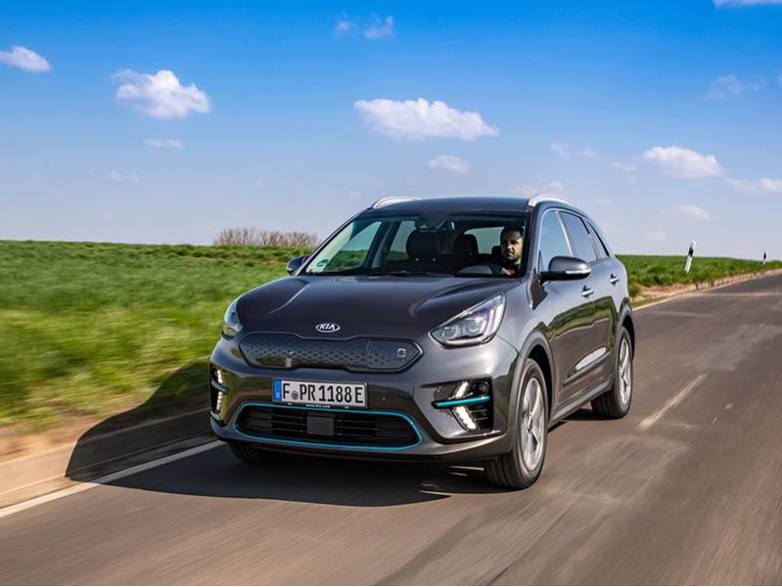
Kia Niro EV
Best for families
If you’re in the market for a practical family, the new Kia e-Niro is sure to impress with its interesting design, practical interior, big boot and low running costs.
Available with two battery options, each powering a single electric motor, the e-Niro is can travel up to 282 miles on a single charge, with the 64kWh variant delivering 201bhp of power to rival a premium SUV.
There’s no compromise on practicality, too, with the large battery sitting under the floor so as not to reduce boot space. There is plenty of interior space for all the family to sit comfortably and a generous 451-litre boot. In fact, with zero emissions and no road tax costs, the e-Niro can be considered a viable alternative to even the most frugal petrol or diesel family SUVs.
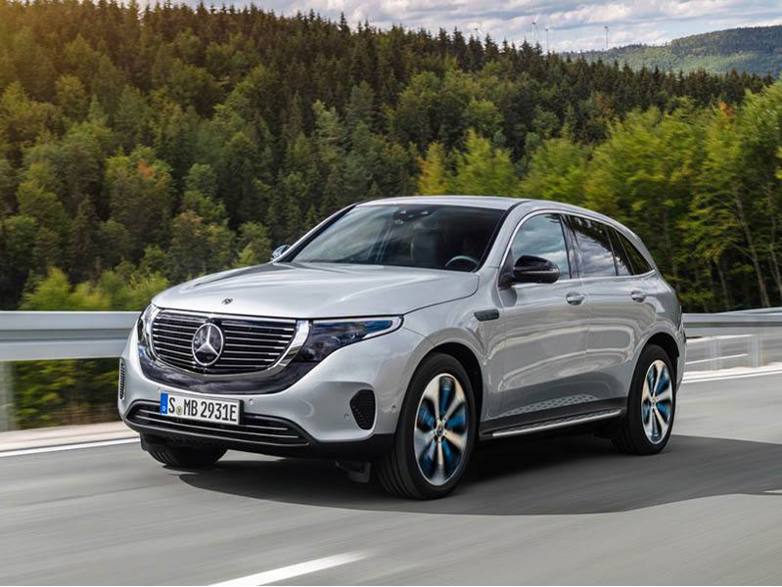
Mercedes-Benz EQC
Best for luxury
Finally, no best-of list would be complete without the luxurious Mercedes EQC. This upmarket SUV is not only comfortable to drive thanks to its spacious, well-built cabin but is also incredibly economical thanks to its all-electric engine.
Power comes from the EQC’s 80kWh battery and electric motor at each axle, delivering an impressive 403bhp and 760Nm of torque. It also offers a claimed range of up to 255 miles on a single charge, which is more than enough to fulfil most driver needs.
But it is inside where the EQC truly impresses with enough space for four adults to stretch out and relax in the supportive seats. Its interior refinement and high-tech interior are in keeping with Mercedes’ upmarket reputation. Boot space isn’t bad either at 500-litres, with space for a few large suitcases or a couple of sets of golf clubs.
Still have a question about taxing a lease car?
Have another question about taxing a new car lease? Call Nationwide Vehicle Contracts on 0345 811 9595 or visit our Taxing a Leased Vehicle guide for further guidance and information.
Guide Information
Originally published: 22nd April 2022
Last updated: 22nd April 2022
